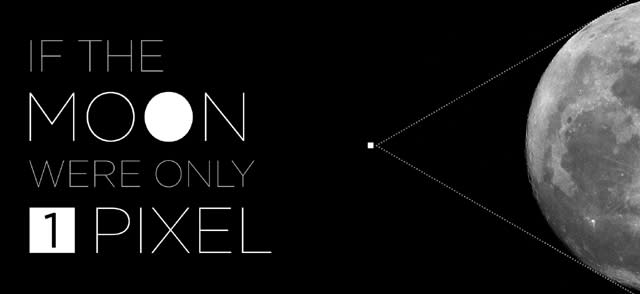 Science and Weather
Science and WeatherFather designs incredible interactive model to show his daughter just how big space is
The vastness of space is intimidating at times, with even the scale of just our solar system being far beyond what we experience in our day-to-day lives. What can be even more intimidating, though, is trying to explain these kinds of scales to a five-year-old child — especially when 'trust me, it's really big' just won't cut it.
This is what artist and media designer Josh Worth faced recently, when he was trying to convey the size of our solar system to his daughter:
I was talking about the planets with my 5-year-old daughter the other day. I was trying to explain how taking a summer vacation to Mars in the future will be a much bigger undertaking than a trip to Palm Springs (though equally as hot). I kept trying to describe the distance using metaphors like “if the earth was the size of a golf ball, then Mars would be across the soccer field” etc., but I realized I didn’t really know much about these distances, besides the fact that they were really large and hard to understand. Pictures in books, planetarium models, even telescopes are pretty misleading when it comes to judging just how big the universe can be. Are we doing ourselves a disservice by ignoring all the emptiness?
To really show it well, he designed an interactive tool that uses Earth's moon as the standard, and created 'If the Moon Were Only 1 Pixel: A Tediously Accurate Map of the Solar System.'
Scaling the entire solar system so that the moon — using 3,474.8 kilometres as its diameter — was just one pixel wide, this side-scrolling journey takes us from the sun all the way out to Pluto, with a few informative and chuckle-worthy notes and factoids on the way.
[ More Geekquinox: Scientists unearth dinosaur that was Europe’s top Jurassic predator ]
This is a very cool presentation of the solar system, and even the very first image you see as you scroll gives a great sense of the scale.
Compare the sizes of the moon and the sun in the image at the top of the article. Now, bearing in mind that the image has been scaled down by about half in order to fit, consider the following. From our perspective here on Earth, that tiny pixel that represents the moon — which would only be 110 pixels away from the Earth at that scale — is capable of completely blocking out that 400-pixel-wide sun when there's a solar eclipse.
However, don't just stop there when you check it out, or you'll miss the full effect of the demonstration, and you'll miss all of Worth's commentary along the way.
(Images courtesy: Josh Worth)
Geek out with the latest in science and weather.
Follow @ygeekquinox on Twitter!




